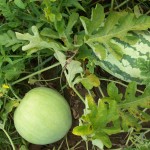 1 October, Saturday
1 October, Saturday
55 Degrees F, Cloudy
Moderate N Wind
Bienvenue dans notre jardin potager. In the inaugural garden journal post, a bit of reflection upon our heritage garden journey, as cooler temperatures descend into the valley and our focus turns to the fall season at Fort de Chartres. Our early fall plantings are beginning to mature and we are looking forward to the late season plantings of radishes, lettuces, spinach, leeks and beets, prolonging the growing season as l’habitants might – providing fresh greens for the fall, while growing roots crops for substance in the upcoming winter.
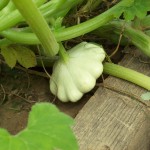 Walking through our garden beds today, the last of the Early Golden Crookneck Squash were harvested, finishing a prolific summer season in which our heirloom squashes (including white and yellow scallop varieties) grew with abandon. We did wage an unsuccessful war with squash bugs these last few months and unfortunately, a toll was taken on late summer production. Happily, the melons have somewhat survived somewhat the onslaught and we are observing a few of the remaining melons in a race against the recent cooler temperatures to finish their season and mature before the first frost. It was ever so intriguing to grow heirloom French melons and discover their fragrance, appearance and taste as they ripened throughout the summer. After suffering through the premature harvesting of the French rock melons not quite ripe, it was a pleasure to finally slice, inhale and taste their mature aroma that was often amazingly floral and sweet. So interesting to learn the look and feel of heirloom produce, with local wildlife often providing the lesson as to ripeness of a new crop. A gardener’s typical lament and frustration is to oversee crop growth with patience and care, only to have the regret that the fruit was left on the vine one day too long and finding melons half eaten! On a positive note, our watermelons were particularly successful earlier this summer and this success was a reminder of a first hand account of the region by Jesuit Fr. Julien Binneteau in 1698, “I am almost forgetting to tell you of our gardens one of their finest ornaments is what we call the watermelon, which grows to an extraordinary size. It has a very sweet taste, differs from our melons because it does not turn yellow. These melons are eaten without salt and are harmless even eaten in quantities.”
Walking through our garden beds today, the last of the Early Golden Crookneck Squash were harvested, finishing a prolific summer season in which our heirloom squashes (including white and yellow scallop varieties) grew with abandon. We did wage an unsuccessful war with squash bugs these last few months and unfortunately, a toll was taken on late summer production. Happily, the melons have somewhat survived somewhat the onslaught and we are observing a few of the remaining melons in a race against the recent cooler temperatures to finish their season and mature before the first frost. It was ever so intriguing to grow heirloom French melons and discover their fragrance, appearance and taste as they ripened throughout the summer. After suffering through the premature harvesting of the French rock melons not quite ripe, it was a pleasure to finally slice, inhale and taste their mature aroma that was often amazingly floral and sweet. So interesting to learn the look and feel of heirloom produce, with local wildlife often providing the lesson as to ripeness of a new crop. A gardener’s typical lament and frustration is to oversee crop growth with patience and care, only to have the regret that the fruit was left on the vine one day too long and finding melons half eaten! On a positive note, our watermelons were particularly successful earlier this summer and this success was a reminder of a first hand account of the region by Jesuit Fr. Julien Binneteau in 1698, “I am almost forgetting to tell you of our gardens one of their finest ornaments is what we call the watermelon, which grows to an extraordinary size. It has a very sweet taste, differs from our melons because it does not turn yellow. These melons are eaten without salt and are harmless even eaten in quantities.”
In a summer season bearing little rain and an abundance of heat, the gardens all survived in one fashion or the other, but with one regret – our native garden. Clever raccoons put short shrift to our maize, knocking over stalks just as the ears were ripening. Pole beans also did not fare well in that location but we hope to harvest some of our winter squash and pumpkins (citrouilles) soon. Our bush and pole beans in general did not succeed this season, whether due to the heat or lack of moisture. The Scarlet Runner Beans in the raised beds were the exception, thriving throughout summer, at times brightening the garden with their bright red flowers with eggplant ripening underneath.
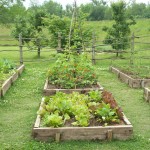 Our spring and early summer season was a happy success, glorious with lovely asparagus, cabbages, beets, lettuces, radishes, abundant peas, and carrots. Temperatures were cool and timely rains made the beginning of our gardening project a success. At this juncture, I must acknowledge and thank the many helping hands that steered this project in the right direction. I am very grateful to Fort de Chartres Site Superintendent, Darrell Duensing, for his support in allowing and encouraging this unique opportunity to relive the past through this gardening adventure. Asst. Site Manager, Dennis Thomas, was invaluable – turning beds, trimming and watering all spring/summer long. Merci to Les Amis du Fort de Chartres, the Fort’s volunteer organization, for their financial assistance as well as time spent in the garden beds, especially Jeremy, John, Jill, Rachel, and the Prairie du Rocher Girl Scouts. Special appreciation for friends James Mikel, Toni, and Renea, helping to present the illusion of a moment in a long ago era. James created lovely reproduction tools and Toni and Renea spent time at Fort events working in the garden, enhancing the events, while accomplishing much needed garden tasks. As a lifelong gardener, having spent many hours researching 18th century garden methods, plants and recipes, this endeavor has been a road of discovery. To my husband Nick, and my family, thank you for providing much needed assistance whenever it is needed. Many hands are indeed the foundation for a successful garden project.
Our spring and early summer season was a happy success, glorious with lovely asparagus, cabbages, beets, lettuces, radishes, abundant peas, and carrots. Temperatures were cool and timely rains made the beginning of our gardening project a success. At this juncture, I must acknowledge and thank the many helping hands that steered this project in the right direction. I am very grateful to Fort de Chartres Site Superintendent, Darrell Duensing, for his support in allowing and encouraging this unique opportunity to relive the past through this gardening adventure. Asst. Site Manager, Dennis Thomas, was invaluable – turning beds, trimming and watering all spring/summer long. Merci to Les Amis du Fort de Chartres, the Fort’s volunteer organization, for their financial assistance as well as time spent in the garden beds, especially Jeremy, John, Jill, Rachel, and the Prairie du Rocher Girl Scouts. Special appreciation for friends James Mikel, Toni, and Renea, helping to present the illusion of a moment in a long ago era. James created lovely reproduction tools and Toni and Renea spent time at Fort events working in the garden, enhancing the events, while accomplishing much needed garden tasks. As a lifelong gardener, having spent many hours researching 18th century garden methods, plants and recipes, this endeavor has been a road of discovery. To my husband Nick, and my family, thank you for providing much needed assistance whenever it is needed. Many hands are indeed the foundation for a successful garden project.
This heritage project pays homage and encourages remembrance of those long ago French habitants and salutes their abilities and skill. Gardens of the region were noted and written of, as remarked in a first hand account by Henry Brackenridge, in his account of a nearby French garden in Ste. Genevieve: “It was indeed a garden – in which the greatest variety and the finest vegetables were cultivated, intermingled with flowers and shrubs: on one side of it, there was a small orchard containing a variety of the choicest fruits.” As we travel this garden path and aspire to the French gardens of the 18thcentury in the Illinois Country, you are invited to follow the maturing of our heritage fort garden and garden blog. Please check our weekly garden posts and photos in the journal section, as well as the updating of the garden layout page, soon to feature updated plans and plant varieties of our garden – past, present and future. A bientot!
PS If you are traveling in the Illinois Country this Saturday, Oct. 9 – visit Fort de Chartres, 11 AM – 4 PM. Toni, Renea, & I will be using the bake oven as part of the demonstrations at the Fort during the Save Illinois History’s Fete at the Fort, A Beer Tasting at Historic Fort de Chartres: http://www.feteatthefort.com/. Stop by, say hello and wander through our garden.
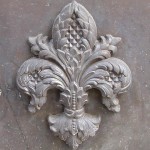 Welcome to our Jardin Potager outside the walls of Fort de Chartres! This garden has been planted in the style of a French l’habitant kitchen garden generally tended by the women of the Illinois Country.
Welcome to our Jardin Potager outside the walls of Fort de Chartres! This garden has been planted in the style of a French l’habitant kitchen garden generally tended by the women of the Illinois Country.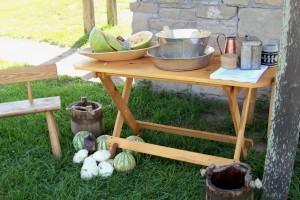
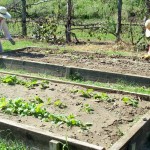
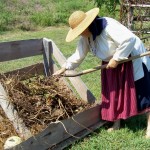
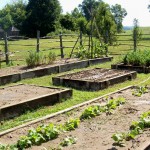
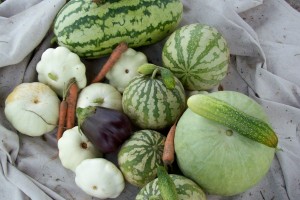
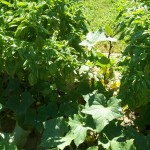
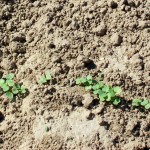
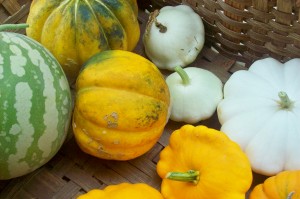
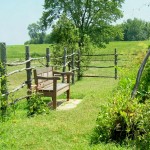
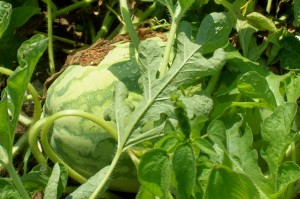
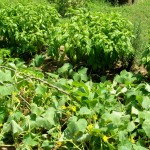
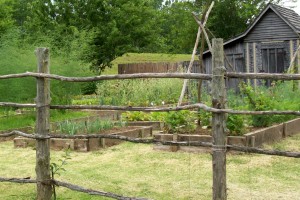
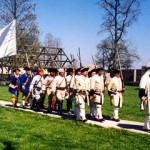
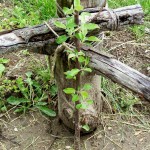
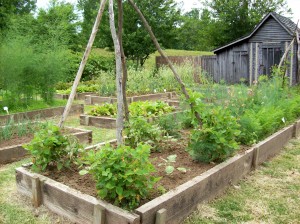
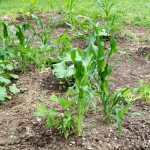
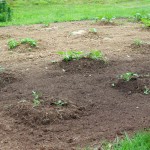



Recent Comments